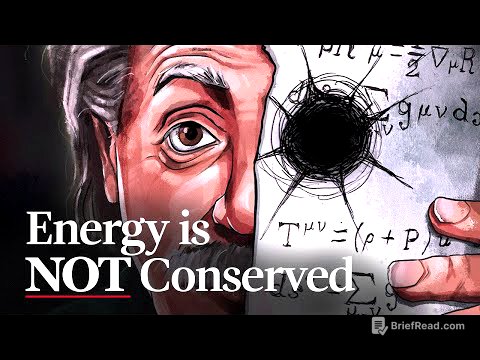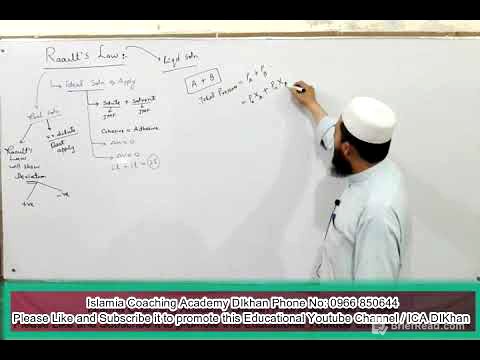TLDR;
This video is a reverse Mesnevi-i Nuriye lesson, focusing on understanding the universe through the lens of Risale-i Nur. It emphasizes the importance of reading Risale-i Nur, listening to related sermons, and reflecting on the meanings to gain deeper insights. The lesson covers key concepts such as Tevhid (Oneness of God), the interconnectedness of beings, and the significance of cooperation and mutual aid in the universe. It encourages viewers to look beyond habitual perceptions and appreciate the wonders of creation with fresh eyes.
- Importance of reading Risale-i Nur and listening to related sermons for deeper understanding.
- Focus on Tevhid (Oneness of God) and interconnectedness of beings.
- Emphasis on cooperation and mutual aid in the universe.
- Encouragement to look beyond habitual perceptions and appreciate the wonders of creation.
Introduction and Risale-i Nur Reading Method [0:00]
The video begins with a prayer and intention to study Mesnevi-i Nuriye. The speaker suggests a method for reading Risale-i Nur effectively: combining reading with listening to sermons on the same topic. This approach is said to create a significant opening of understanding and unite meanings, enhancing comprehension. As an example, the speaker mentions listening to Hocaefendi's prayer while reading the demos, finding it very sweet and fruitful. The second single, nail polish, beautifully explains the second law of thermodynamics.
Prayer and Call to Reflection [1:53]
The lesson starts with a prayer, asking Allah to illuminate hearts with the light of faith and the Quran, and to protect from bad habits and insensitivity. The prayer seeks intimacy with Allah and awareness of human needs. Following the prayer, there's a call for the words spoken to leave a mark of knowledge in the heart, and for the experience to inspire new attention and love. The prayer also asks for prostrations to be a prelude to universal servitude and a means to deeper connection with God.
Review of Previous Lessons [6:14]
The speaker reviews previous lessons, starting with the concept of Tevhid, emphasizing that everything belongs to God. The owners of Tevhid see the coin of God above everything. The review touches on the idea that God created everything from something and everything from everything. Each living creature in the universe is a whole being, filtered with special measurements. The second and third Lema, related to the Life page, are mentioned, highlighting how each living being reflects the divine Names of God. The fourth sin is the universe as a book. The fifth sin is reading the universe as a book, each rod as a poem.
Sixth Lema and the Relationship Between Partial and Universal [10:52]
The sixth part of the lesson focuses on the relationship between partial and universal concepts, autumn and ash, languages and cultures, leading to the secret of oneness. The relationship between the part and the power expresses a wholeness. The shine of making gold and the sparkle of the daughter relate to resurrection and publications about excessive and joyful events in the universe. This happens within the framework of a close nation, with God creating them again within the same intention.
Seventh Lema: Looking at the Universe with the Eye of Reflection [15:33]
The seventh Lema emphasizes the importance of "looking" with intention. The universe is described as a magnificent palace, a regular factory, and a perfect city, highlighting integrity and regularity. The factory metaphor is used to illustrate the functioning and production within the universe, with tools and equipment in wise conflict and meeting, helping and cooperating. This reflects a deep interconnectedness and mutual aid among beings.
Interconnectedness and Mutual Aid in the Universe [19:38]
The lesson explores the interconnectedness of beings, emphasizing that the universe is created as a cradle of friendship and brotherhood. Beings talk to each other, help each other, and meet each other's needs. The speaker references scientific studies on how trees in a forest communicate through their roots. This mutual aid is essential for maintaining balance and harmony in the universe.
The Law of Cooperation and Solidarity [36:19]
The law of cooperation and solidarity is highlighted as a fundamental principle of the universe. The sun, moon, night, and day all contribute to the growth of animal food and plant species. Animals, plants, and humans help each other, maintaining a delicate balance. This cooperation should not be read as savagery but as a principle of existence.
Assistance and Help as Evidence of Divine Care [43:12]
The lesson emphasizes that assistance and help are evidence of divine care. The silkworm, sheep, and ants are given as examples of beings that provide help to humans. Even seemingly insignificant creatures play a role in maintaining the balance of the universe. The health officers (ants) and Hajjam (flies) are mentioned as examples of beings that help in various ways.
Treatment and the Needs of All Beings [45:50]
The needs of all beings are met with divine treatment and care. The stomach and museum are used as metaphors to illustrate this point. All beings are servants and workers, fulfilling their roles with God's order and permission. Flowers, plants, and animals communicate their needs and desires, and God responds to their prayers.
Eighth Lema: Sustenance and Divine Provision [49:19]
The eighth Lema focuses on sustenance and divine provision. God provides sustenance to creatures, especially animals, at certain times and in certain amounts. This sustenance is sent from the skies and extracted from the soil, ensuring that the world does not turn into a dirty warehouse. The fruits of the trees in the forest are the sustenance of wild animals.
The Intention of Rahman and the Grace of God [56:57]
The intention of Rahman (the Most Gracious) is seen in the provision of sustenance. God provides sustenance with the intention of grace and mercy. This sustenance is a special gift, and it is provided in proportion to the need. There is no waste or deprivation in the universe.
Contemplation and Gratitude [1:00:12]
The lesson concludes with a call for contemplation and gratitude. Viewers are encouraged to examine the universe and reflect on the wonders of creation. The goal is to break the curtain of habits and see the world with fresh eyes, appreciating the extraordinaryness of God's creation.
Closing Prayer and Invitation to the Next Lesson [1:02:19]
The video ends with a closing prayer, asking Allah to grant viewers the ability to produce and thank Him well. The speaker invites viewers to the next lesson, which will focus on the ninth Lamp and will be held on the night of Power. The lesson will explore the garden of Power and read a text containing what the night of Power is.









